I’ve never been a fan of traditional British Style (bitter) marmalade made from Seville Oranges (Citrus aurantium). And here in California, very few people like bitter marmalade… so making a batch to give away as gifts is often met with an, “Um… no thanks.”
In the last year, I’ve spent a lot of time trying to perfect my Orange Marmalade recipe… making it sweet, not bitter. My recipe, which I call “California Sweet Orange Marmalade” is made with Valencia oranges, which are sweet juicing oranges from Southern California. Use Valencia oranges if you can find them – if not, regular navel oranges are fine too.
The main secret in producing a sweet (instead of bitter) marmalade is to reduce the amount of white pith, seeds, and membranes. The problem is that these parts of the orange also contain pectin (which gels the marmalade), so by omitting these ingredients, you lose most of the natural gelling compounds. The solution to this problem is very simple – store bought pectin – which can be found in pretty much every supermarket. I prefer to use low sugar pectin, as the resulting marmalade is still sweet – but not overly sugary.
The final secret in producing a sweet marmalade is to boil the orange peels several times to leach out the bitterness. You do lose a tiny little bit of the orange flavor this way – but trust me, you will still have plenty of orange flavor in the final product.
You will get about 6 cups of marmalade out of this recipe. For optimal storage, you can home can the marmalade in half pint jars using the water bath canning method below. You could also ladle the jam into sterilized freezer jars, and freeze until needed (or store in the refrigerator for up to 4 weeks). For best results, do not double this recipe… this sized batch is optimal – reducing or doubling the recipe will produce an inferior product.
Update: This recipe has been featured by the BBC, on their Food Blog feature “Marmalade: Oranges are not the only Fruit.”
Mika’s California Sweet Orange Marmalade: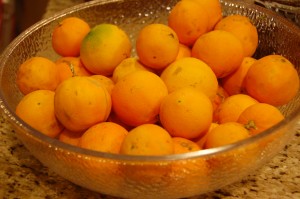
- 10 medium oranges
- 3 T. low sugar pectin
- 3 T. lemon juice
- 1/2 tsp. salt
- 1/2 tsp. ground cloves
- 1/2 T. unsalted butter (optional)
- 3 c. sugar
- 2 T. whiskey (optional)
Hardware needed:
- large stock pot with metal rack
- tongs
- ladle
- 6 half-pint canning jars with rings and new lids
1. Scrub and wash the oranges thoroughly and dry. Using a very sharp knife or peeler, remove as thin a layer of peel as possible from the surface of the oranges, trying to get as little of the bitter white pith as possible.
2. Place the peels in a small saucepan, cover with water, and bring to a boil. Simmer for 5 minutes, then dump out the water, and refill with water to cover. Repeat this step 2 times, so that the peels have been boiled and simmered a total of 3 times. (This step is to soften the peel, and also leach out most of the bitterness.)
3. While you are boiling the peels, using a sharp knife to peel the oranges. Start by cutting the ends off of the orange, then cutting slightly into the orange “meat”, cut all the way around, removing the peel. You don’t want to have any bitter white pith on the orange.
4. Segment the oranges over a large bowl, squeezing the remains to release any juice into the bowl. (You want to avoid any membrane if possible – this is another part of the orange that will make the marmalade bitter in addition to the pith. These are also the parts of the orange with natural pectin, which is why we are adding pectin to the recipe so that it gelatinizes.) Notice these is virtually no membrane or pith on the orange segments in the picture below.
5. Once the peels have been processed 3 times, and the oranges have been segmented with the remaining juice, pulse the orange segments + juice + drained peels for 10 second intervals three times in a food processor to get a rough puree (you should still be able to see little bits of the peel).
6. Measure the orange puree, and if you don’t quite have 4 cups… add water to increase the volume to 4 cups. Pour the puree into a stockpot and add the pectin, lemon juice, salt, cloves, and butter. (Butter is added to reduce foaming – it can be omitted for vegans or people who are avoiding dairy). Bring to a boil, reduce the heat, and simmer while stirring for 5 minutes.
7. Add the sugar, stir, and bring back to a hard boil for 1 minute. Turn off the heat, and stir in the whiskey. Your jam is now ready to can. From personal experience, it is best to wait another 10 minutes before filling the jars so that the chunks of fruit stay suspended instead of floating to the top. If you are not canning, pour your jam into sterilized containers and store in the refrigerator for up to 4 weeks.
8. To can the marmalade, I use a hot water bath. Put the jars, rings, tongs, and ladle into a large stock pot with metal rack in the bottom and fill with water. Bring up to a boil, and allow the jars to sterilize in the hot water for 10 minutes. Turn off the heat, and carefully remove the jars onto a clean kitchen towel. (While you are filling the jars, add the new lids to the hot water to soften the adhesive.)
9. Fill the hot jars with hot jam (leaving 1/2″ head space), then wipe of the rims with a hot water soaked paper towel. Place the lids on top, then screw on the rings – finger tight only.
10. Place the jars back into the hot water, resting on the metal rack. Make sure the water covers the top of the jars by at least one inch. Cover with lid, then bring back to a boil. Once boiling, allow the jars to process for 10 minutes (if you are at an elevation below 1000 ft. For higher altitudes, you will need to add more time to the processing – generally, 5 minutes extra for every 5000 ft.) Do not be fooled by air bubbles escaping from the jars – make sure the water is actually boiling before you start the 10 minute sterilization countdown.
11. Remove the jars from the water (carefully), and place on a kitchen towel to cool. Leave the jars undisturbed overnight. While cooling, you will hear a “pinging” sound coming from each jar, indicating that it has sealed. Check all the seals the next day – the lids should not move up and down when depressed with a finger.

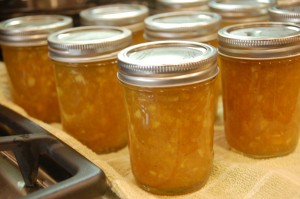
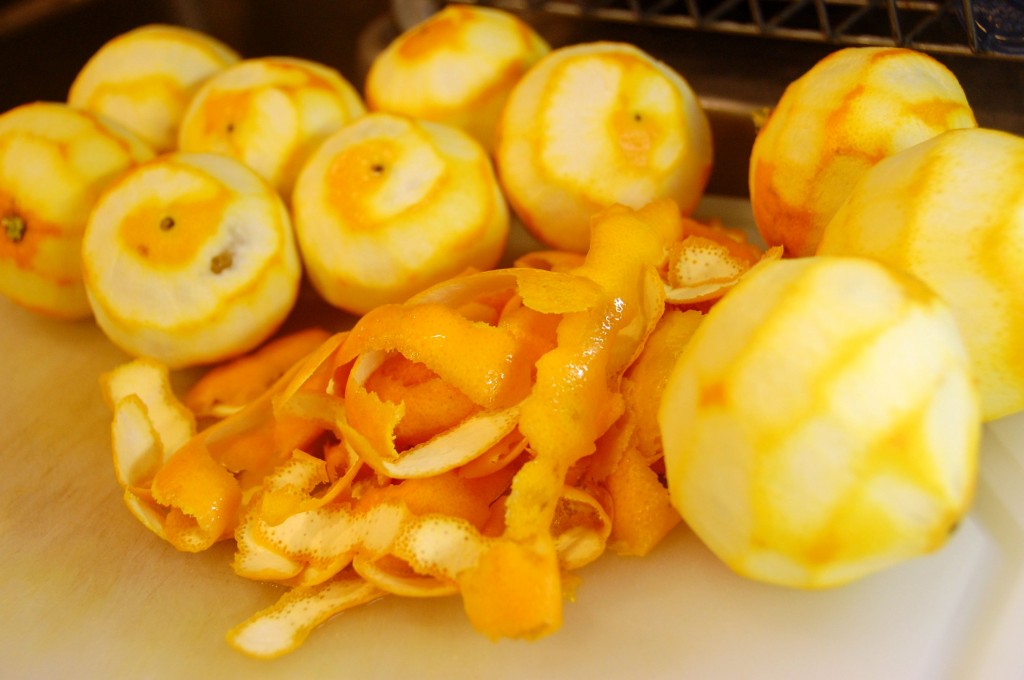
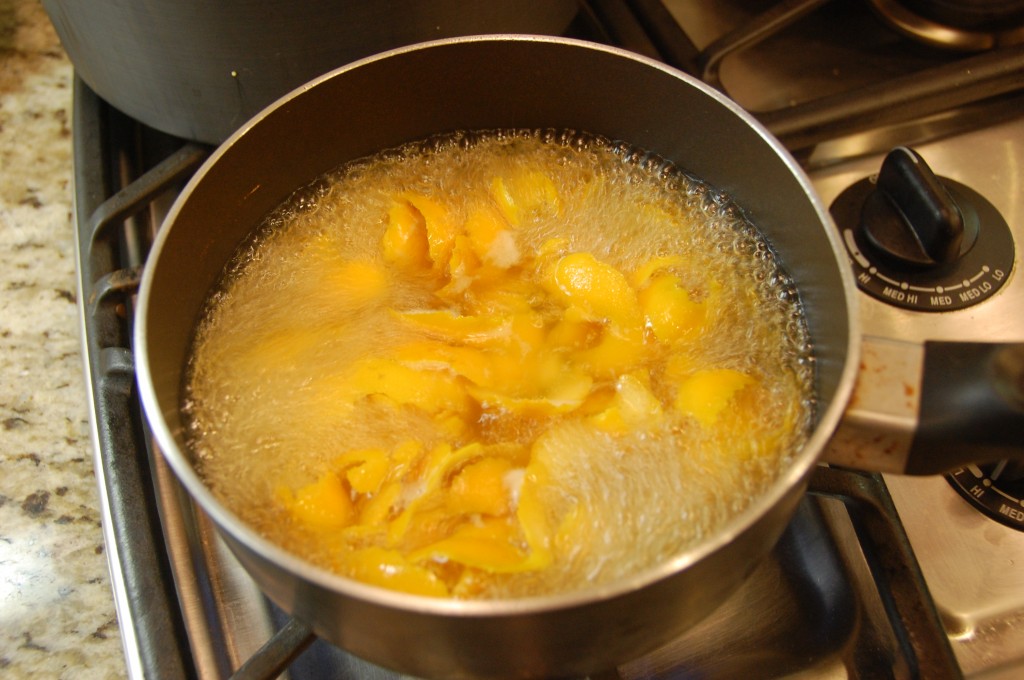
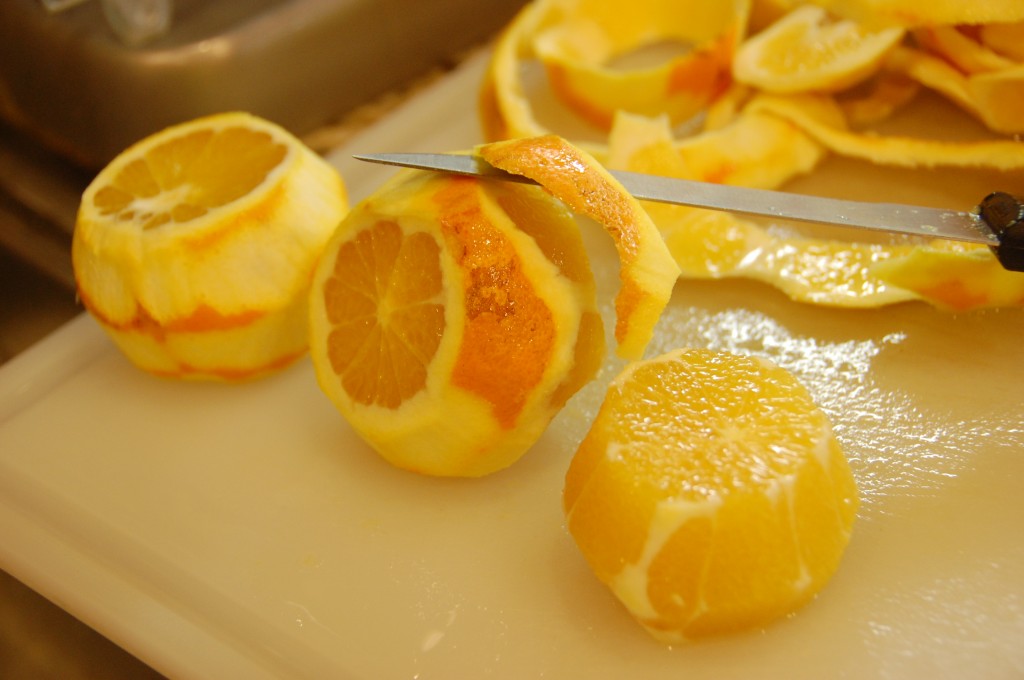
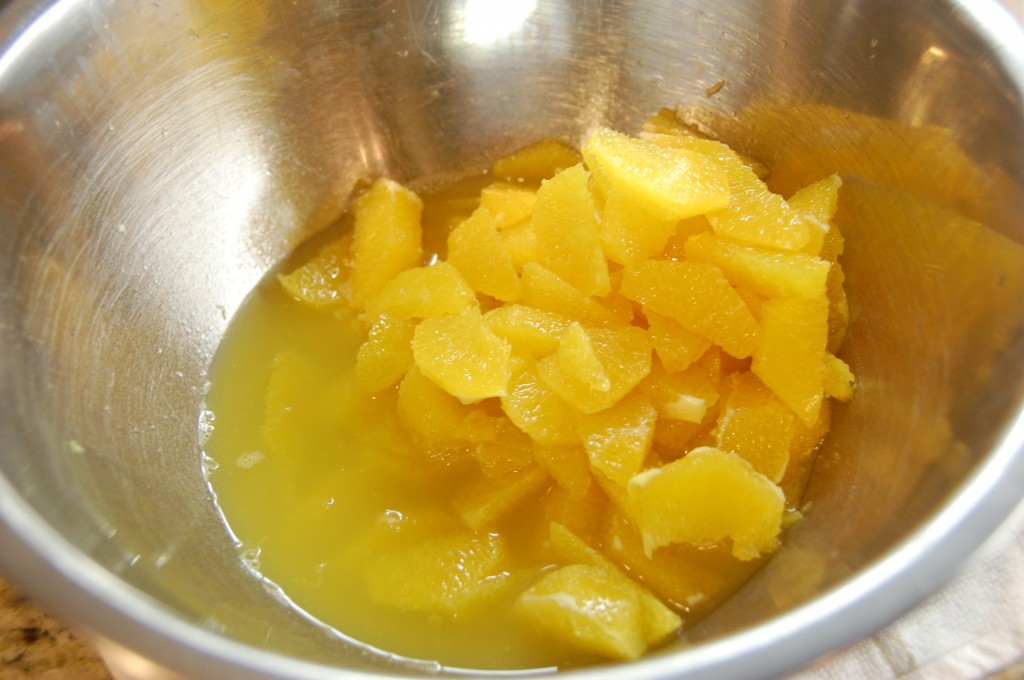
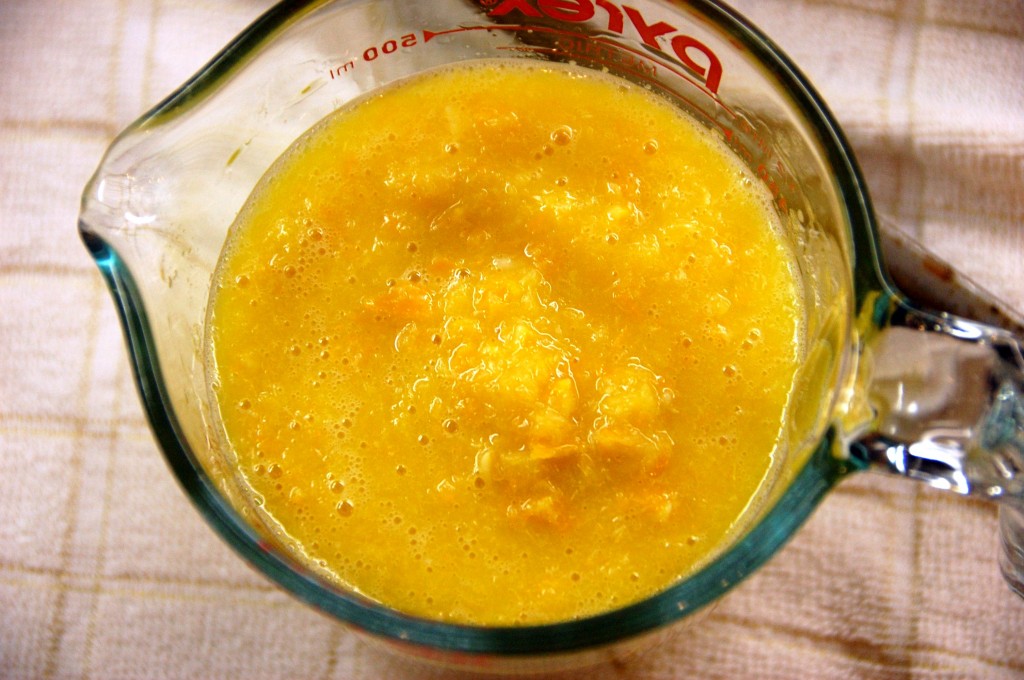
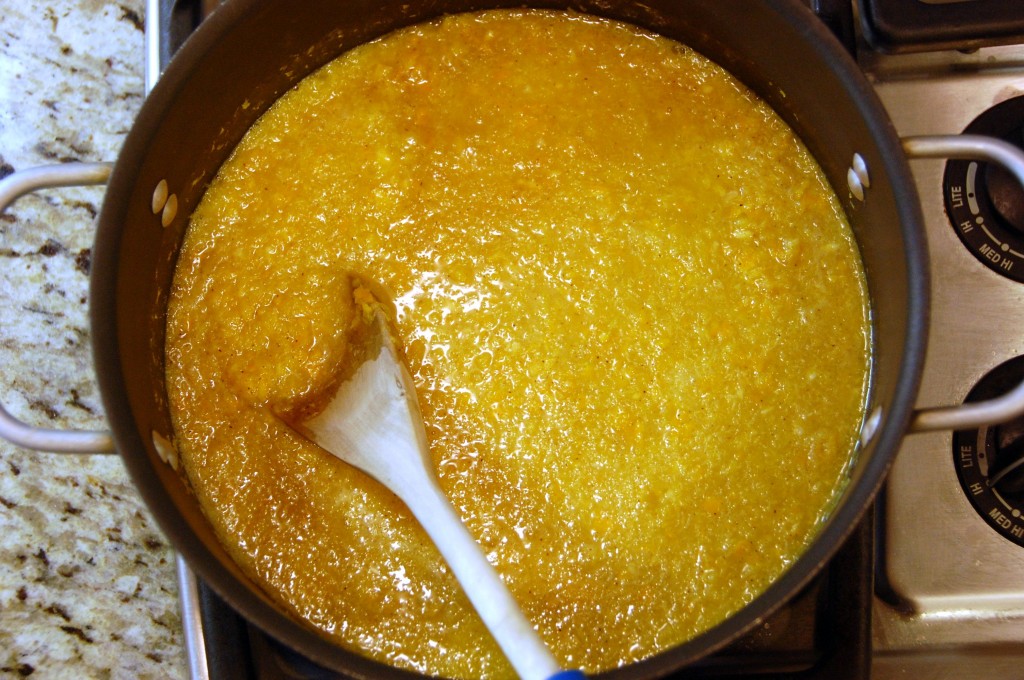
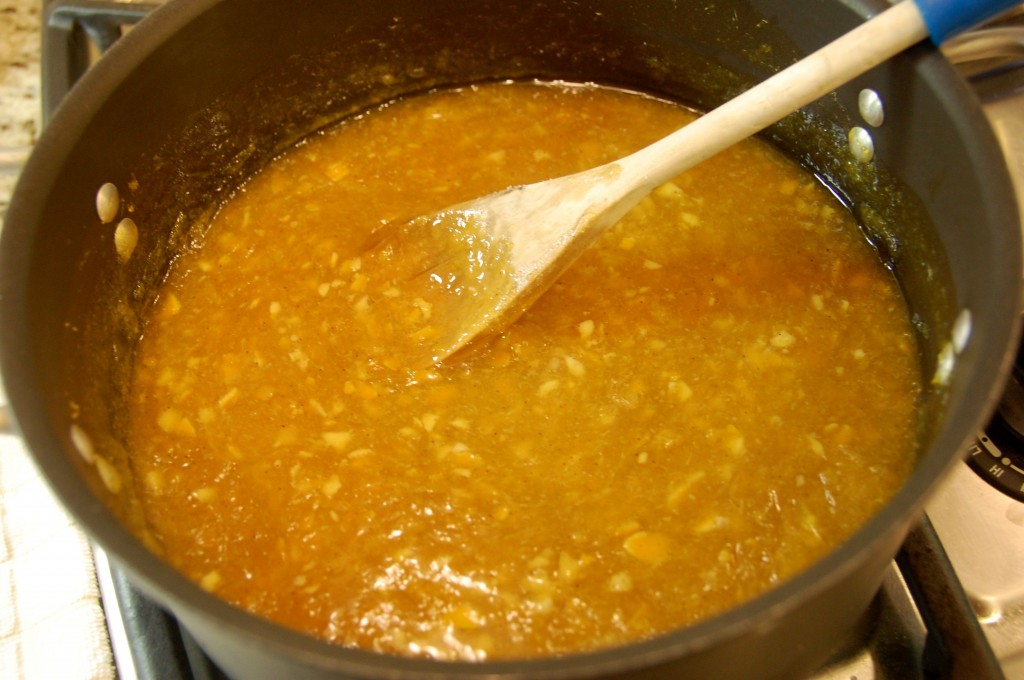
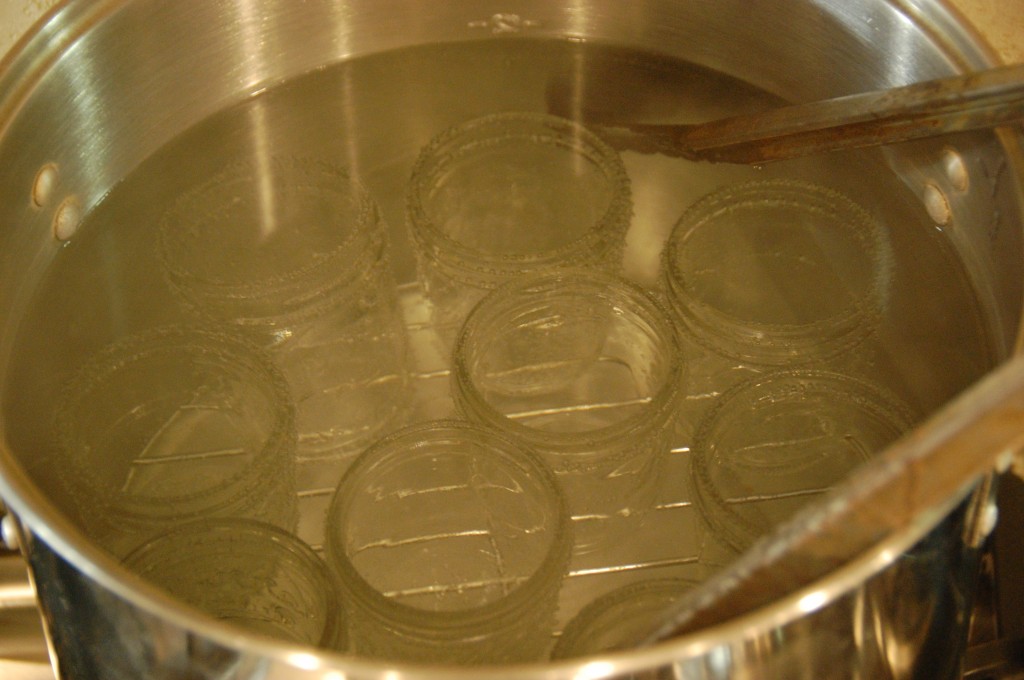
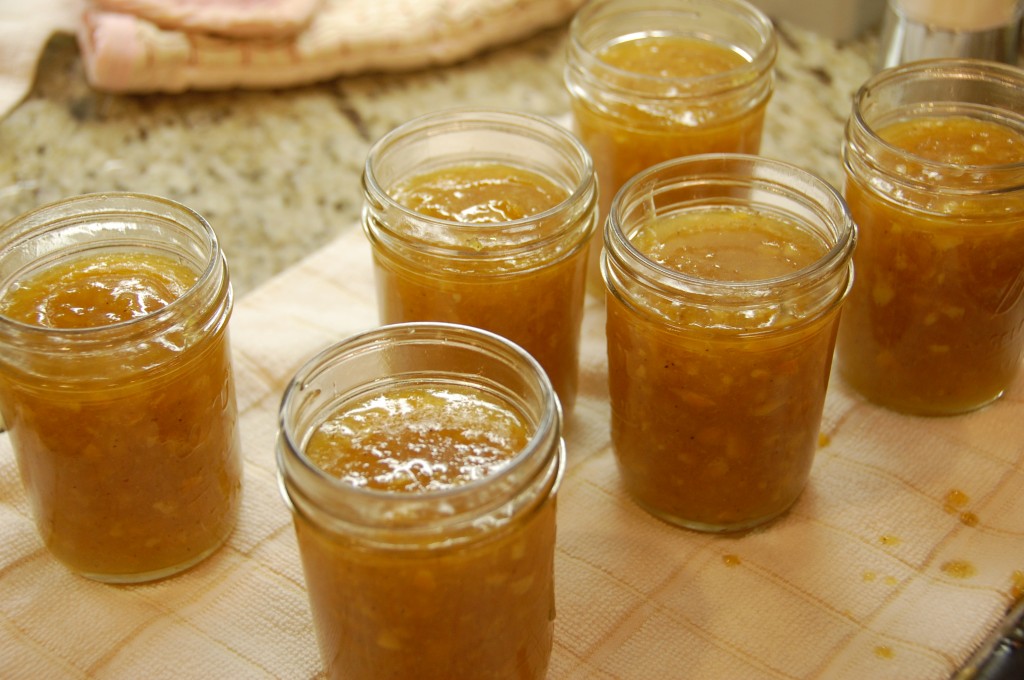
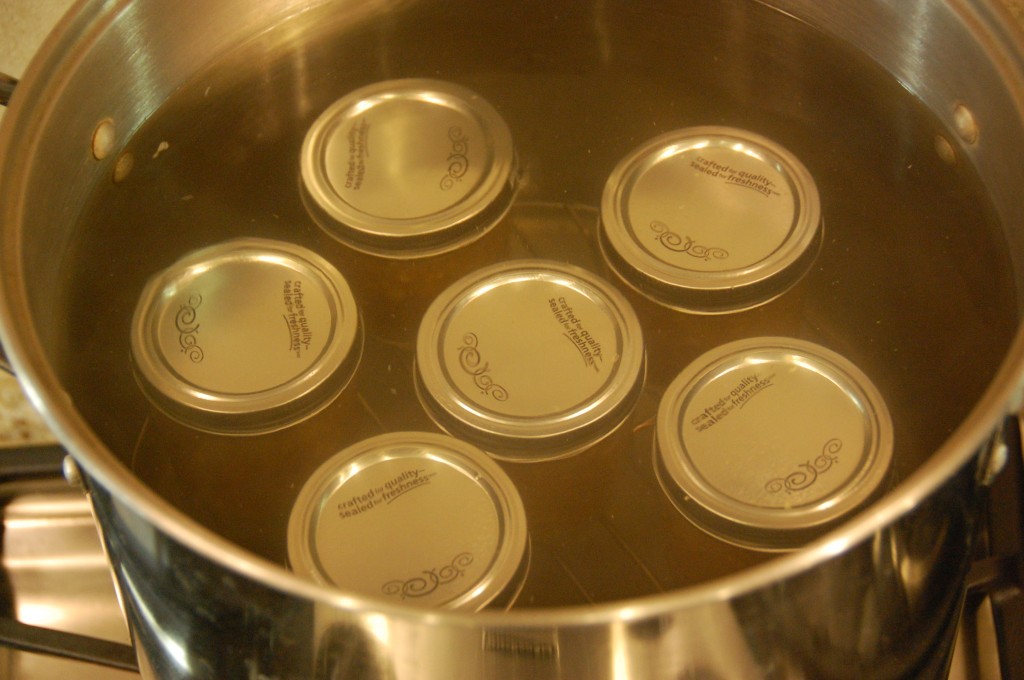
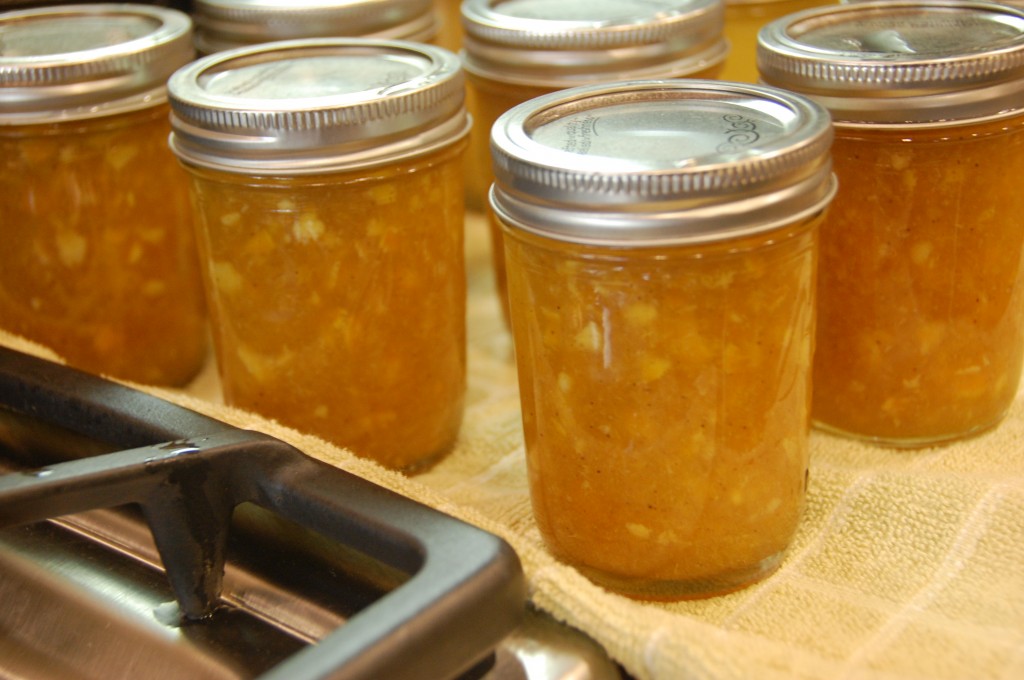


Dear Mika:
I just found your website while I was searching for a sweet orange marmalade. I have never made any jam or jelly before and today I will try your recipe! Like you I do not like better orange flavor. Do you have any last minute suggestions, or insights?
Best,
Hi Anne! Glad to share the recipe with you.
The more you boil the peel, the less white pith you get on the peel, and the more water changes you do while boiling – the less bitter the end result will be.
Let me know how it turns out… I hope you like my recipe!
Oh Mika! Your guidance was WONDERFUL ! I used Cara Cara Oranges and 1 Lemon I made 3 12 oz jelly jars. I was looking at your recipe and the one from “Ginger and Garlic”. You were both so very helpful. I tried at first to just boil it down so I would not have to use pectin. Stupid me–I kept boiling, but then I did not like how the color was going so I thought ok, I’ll go with the low sugar pectin. I added about 4/5 T of pectin and it worked great. Another thing I did a little different was just before the end (about 5 or 10 minutes before) I added a half of one of those little airline bottles of Cointreau–Yippeee! I turned out perfect for us sweet/sweet/little tart! Thank you again for your help. Keep up the good work! Anne
Hi Mika: I am having a hard time posting my comment, but will try again, so here goes. Thank you so much for your help in making my first ever orange marmalade. Your guidance was terrific! I was reading your instructions and the gal over at Ginger and Garlic. After making sure there was no pitch and boiling my lemon peels 3 x’s , I first thought I would be a purist and try to just boil everything down without using pectin. Then I panicked and decided I would go with the pectin on my first adventure. I use SO Low Jell Pectin and it worked beautifully. I used 4 T and got 3 12 oz jars of marmalade. The world’s most PERFECT marmalade. I used Cara Cara Oranges (6) and two regular navel oranges and one small lemon. But almost at the end after I added the pectin I took a bold leap and went out on my own! I poured in 1/2 of those little airplane bottles of Cointreau !! YIPPEE I have marmalade that is sweet/sweet/little tart! Thank you again for your help and guidance they were wonderful!
Anne,
I’m glad it worked out for you! Your jam sounds delicious… hmm I’ll have to try Cointreau next time.
I just made this marmalade after searching for a sweeter marmalade, without the bitter pithy taste. I wasn’t convinced a recipe existed. Luckily I found your website and it turned out wonderful. Thank you! I am going to be giving jars of it out for Christmas. I will also be coming back to try some of your other recipes.
Hi Brie! I’m so glad it worked for you! Thanks for the feedback!
Thanks for the feedback!
This made the best marmalade I have ever tasted.
Thanks so much for the feedback, Rachel! I’m glad you liked it!
Hi Mika!
Just tried to make this yummy marmalade but used regular pectin instead of lite (it was what I had on hand). My marmalade has not set yet. Any tips?!?
If you are using regular pectin, then you need to use much more sugar to make it gel. Also, it will not fully gel until completely cool.
Thank you! I ended up re-boiling it and adding some instant pectin. Did the trick to thicken it up, but was a little sweeter than I had hoped. Nonetheless excited to retry this recipe with the correct pectin next time :0)
I have now my all time favorite marmalade!! I just made a batch, and immediately made a second batch. The boiling of the peel allowed me to use the peel in the marmalade without getting the bitter taste. While this recipe is more prep work than my previous recipe, the extra effort is certainly worth it!
So glad you liked it! I know, it is time consuming – but it’s nice to have sweet (not bitter) marmalade!
It also makes a great sugar-free marmalade!! I used a combination of concentrated stevia & agave syrup. Came out great, and is OK for diabetics in moderation.
Thanks for the tip!
Could I sub ground ginger for the cloves?
Sure, I don’t see why not!
Dear Mika,
Would like to try out your lovely orange jam recipe,
can I substitute pectin with gelatin coz couldn’t find it locally.
3 c of sugar equal to how many gm of sugar ?
I’m really not sure if you can make that substitution and have the recipe turn out the same. You can usually order pectin online.
Ball RealFruitTM Classic Pectin1 c. sugar is usually somewhere around 7.1 oz, about 201 grams.
Hi, today I made orange jam too, before seeing your recipe, I like orange but I don’t like it bitter, so I did pretty much what you did expect I didn’t add any peel, didn’t know it would remove the bitterness if boiled so I just eliminated it. I like the aroma the peel has so next time I will try it your way. I have made jams before. but I never bothered to boil jars before or after. I just wash with soap and water and dry them, once filled the jars with hot jam I seal them and turn them upside down on a table cloth, and let them cool. I store them upside down and they never spoil. you might want to experiment a couple of jars my way and see how it goes, you save a lot of time not boiling anything but the jam. just a suggestion, a big time saver.
Hi there. My recipe is not bitter. Boiling the orange zest helps to remove (leach out) the bitterness.
Your method of washing the jars and turning them upside down to seal is no longer recommended for food safety reasons. One, you need to properly sterilize the jars in boiling water in order to kill any lingering bacteria – soap and hot tap water will not kill all of the bacteria. Also, most food safety experts recommend water bath processing (for high acid foods like jams) or pressure canning (for low acid foods) in order to decrease the risk of botulism, and further kill bacteria which may spoil the food and make it unsafe to consume.
Many people say, “But I’ve always done it this way and I’ve been fine.” While that may be true, there is still a risk of contamination using these older methods, and botulism can be fatal: http://www.foodsafety.gov/poisoning/causes/bacteriaviruses/botulism/
For further information on home canning and safety, see the National Center for Home Preservation’s website:
http://nchfp.uga.edu/questions/FAQ_canning.html
I am sorry to be a bit thick but as one that makes mountains of the ‘normal’ marmalade can you please tell me what T and C mean please, never heard of this sort of measure before.
In the U.S.A., we mainly use volumetric measurements in our recipes:
“T.” = “Tablespoon” = 14.8 mL
“tsp.” = “teaspoon” = 4.9 mL
“c.” = “cup” = 236.6 mL